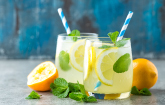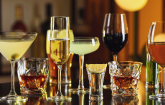NEW YORK, July 26, 2024 /PRNewswire/ -- The global wine corks market size is estimated to grow by USD 3.13 billion from 2024-2028, according to Technavio. The market is estimated to grow at a CAGR of 5.47% during the forecast period. Rising demand for wine is driving market growth, with a trend towards growing online wine retailing. However, campaigns against alcohol consumption poses a challenge. Key market players include Advance Cork International, Allstates Rubber and Tool Corp., BOUCHONS LECLERCQ ET FILS, Corticeira Amorim S.G.P.S S.A., DIAM BOUCHAGE SAS, J C RIBEIRO, JACORK, Jelinek Cork Group, Korkindustrie Trier GmbH and Co. KG, M A Silva USA, Nagpal Cork and Jointing, Portuguese Cork Association, Precisionelite, Sugherificio Martinese and Figli srl, Vinocor, Vinventions LLC, Waterloo Container Co., We Cork Inc., WidgetCo Inc., and Zandur.
Get a detailed analysis on regions, market segments, customer landscape, and companies- View the snapshot of this report
Wine Corks Market Scope |
|
Report Coverage |
Details |
Base year |
2023 |
Historic period |
2018 - 2022 |
Forecast period |
2024-2028 |
Growth momentum & CAGR |
Accelerate at a CAGR of 5.47% |
Market growth 2024-2028 |
USD 3138.3 million |
Market structure |
Fragmented |
YoY growth 2022-2023 (%) |
5.08 |
Regional analysis |
Europe, North America, APAC, South America, and Middle East and Africa |
Performing market contribution |
Europe at 33% |
Key countries |
US, France, Italy, Germany, and China |
Key companies profiled |
Advance Cork International, Allstates Rubber and Tool Corp., BOUCHONS LECLERCQ ET FILS, Corticeira Amorim S.G.P.S S.A., DIAM BOUCHAGE SAS, J C RIBEIRO, JACORK, Jelinek Cork Group, Korkindustrie Trier GmbH and Co. KG, M A Silva USA, Nagpal Cork and Jointing, Portuguese Cork Association, Precisionelite, Sugherificio Martinese and Figli srl, Vinocor, Vinventions LLC, Waterloo Container Co., We Cork Inc., WidgetCo Inc., and Zandur |
Market Driver
Online retailing of wine is experiencing significant growth due to faster delivery services and competitive pricing. Among all distribution channels, online retailing is projected to record the fastest expansion during the forecast period. The number of wine brands and producers selling their products online has increased substantially since 2020, with online sales accounting for 68% of total wine sales in 2020, compared to spirits (18%) and beer (13%). Small and local vendors can reach premium customers globally by selling their products online. Established players in wine logistics are improving delivery services through organic and inorganic strategies, driving market growth. Vendors can offer competitive pricing and attractive product presentations on online platforms, eliminating middlemen and increasing profit margins. These factors are expected to boost the demand for wine corks and fuel the growth of the global wine cork market during the forecast period.
The Wine Corks Market is witnessing significant trends with the integration of robotics and automation in cork and wine stopper production. Physical and chemical properties of cork, rubber, and plastic caps are crucial factors in preventing moisture, spillage, oxidants, and microorganisms from affecting wine quality. Wine fairs like Vinexpo and Prowein showcase the latest innovations, including novel wines, designer corks, and synthetic or plastic corks. Importers, wineries, and global market players are exploring sales cycle optimization and product positioning against competitors. Developing economies present substantial export potential. The Coronavirus crisis has impacted bars, restaurants, hotels, and cruise ships, affecting the alcoholic beverages industry, including wine production and consumption. Wine makers are focusing on heart-health benefits to attract health-conscious consumers.
Discover 360° analysis of this market. For complete information, schedule your consultation - Book Here!
Market Challenges
- The wine market faces a significant challenge due to increasing campaigns against alcohol consumption. These campaigns, led by regulatory and social organizations, aim to educate the public about the harmful effects of alcohol, including liver diseases, cancer, cardiovascular problems, tuberculosis, and others. Governments, including some in India, have imposed regulations restricting alcohol advertisement and promotion, making it difficult for wine manufacturers to sell their products. In November 2021, The Pan-American Health Organization launched the Live Better, Drink Less campaign to highlight the negative impact of alcohol consumption. These factors are expected to limit the growth of the global wine market and, consequently, the wine cork market during the forecast period.
- The wine corks market faces several challenges in the current business landscape. With the rise of novel wines and designer corks, traditional natural corks face increasing competition from synthetic and plastic alternatives. The coronavirus crisis and subsequent lockdowns have impacted bars, restaurants, hotels, and cruise ships, leading to a decrease in wine consumption. In the health sector, concerns over heart disease, stroke, diabetes, and digestive tract infections have led consumers to opt for alcoholic beverages with lower alcohol content. Wine tourism and the wine industry are also affected, impacting the demand for wine bottles and corks. Recyclable corks made from recycled sugar cane and cork recycling services are gaining popularity. Companies like Burlington Drinks are investing in natural corks made from Cork Oak and synthetic materials like plant-based polymers. Wine producers are also experimenting with glass stoppers, screw caps, and sensors to maintain oxygen transfer rates. The market is segmented into still wines and sparkling wines, with natural corks dominating the still wine segment and synthetic corks leading in the sparkling wine segment. Winemakers are targeting millennials and boomers through various online distribution channels. The export business is also a significant market for wine corks, with Polyethylene-based corks and muselets being popular choices.
For more insights on driver and challenges - Request a sample report!
Segment Overview
This wine corks market report extensively covers market segmentation by
- Type
- 1.1 Natural
- 1.2 Synthetic
- Distribution Channel
- 2.1 Offline
- 2.2 Online
- Geography
- 3.1 Europe
- 3.2 North America
- 3.3 APAC
- 3.4 South America
- 3.5 Middle East and Africa
1.1 Natural- The global wine cork market is driven by the increasing demand for wine worldwide. Approximately 80% of natural wine corks are sourced from the Iberian Peninsula, where they are sustainably harvested from oak tree bark in the Mediterranean region of Europe and Africa. Natural cork's spongy texture enables it to compress and expand with minimal air diffusion, making it an ideal closure for wine bottles, particularly for aging red wines. The market is expanding due to the growing popularity of wine in Asia Pacific (APAC), where new players are entering the industry as demand for premium wines increases. India, in particular, is witnessing a surge in demand for sparkling wines and other premium alcoholic beverages, presenting significant growth opportunities for market participants. Europe and North America, with their high wine consumption rates, also contribute significantly to the market's growth. Overall, the wine cork market is expected to grow positively during the forecast period.
For more information on market segmentation with geographical analysis including forecast (2024-2028) and historic data (2017-2021) - Download a Sample Report
Research Analysis
Wine corks are an essential component in the wine industry, sealing bottles to preserve the quality and taste of wines. Novel wines continue to emerge, leading to diverse cork options, including designer corks. Natural corks, derived from the bark of Cork Oak trees, have long been the traditional choice due to their unique physical and chemical properties. However, synthetic corks, made from plastic, rubber, or other materials, have gained popularity due to their consistency and resistance to TCA contamination. The Coronavirus crisis and subsequent lockdowns have significantly impacted the wine industry, with bars, restaurants, and hotels closed. This has led to a shift in consumer behavior towards purchasing wine in bottles rather than by the glass, driving up demand for wine corks. Both natural and synthetic corks have their advantages and disadvantages. Natural corks offer a traditional look and feel, but can be susceptible to moisture, spillage, oxidants, and microorganisms. Synthetic corks and alternatives like glass stoppers and screw caps provide more consistent seals and are less prone to these issues. Wine corks come in various types, including those for still wines, sparkling wines, and Champagne, with muselets used for Champagne and other sparkling wines. Understanding the properties of these corks, including their physical and chemical characteristics, is crucial for ensuring the best possible wine experience.
Market Research Overview
The Wine Corks Market encompasses a diverse range of products used to seal wine bottles, including novel wines with designer corks, natural corks from Cork Oak trees, synthetic corks made from plastic or rubber, and glass stoppers or screw caps. The market has been impacted by the Coronavirus crisis and subsequent lockdowns, affecting bars, restaurants, hotels, cruise ships, and the alcoholic beverages industry. Wine production and consumption continue, with a focus on heart disease, stroke, diabetes, and digestive tract infections as health concerns. Wine tourism and the wine industry adapt to changing consumer trends, with millennials and boomers driving export business. Recyclable corks made from recycled sugar cane and cork recycling services are gaining popularity. Technological advancements include sensors, plant-based polymers, robotics, and automation. The market offers opportunities for winemakers, importers, and wineries, with a sales cycle influenced by product positioning, competitors, and export potential. Developing economies present significant growth opportunities. Advertisement and partnerships with wine makers are key strategies for market expansion. Wine corks market includes still wines and sparkling wines, with muselet, natural corks, synthetic corks, and plastic caps as key product categories. Physical and chemical properties, moisture, spillage, oxidants, and microorganisms are important considerations for wine corks. Major events like Vinexpo and Prowein showcase the latest trends and innovations in the industry.
Table of Contents:
1 Executive Summary
2 Market Landscape
3 Market Sizing
4 Historic Market Size
5 Five Forces Analysis
6 Market Segmentation
- Type
- Natural
- Synthetic
- Distribution Channel
- Offline
- Online
- Geography
- Europe
- North America
- APAC
- South America
- Middle East And Africa
7 Customer Landscape
8 Geographic Landscape
9 Drivers, Challenges, and Trends
10 Company Landscape
11 Company Analysis
12 Appendix
About Technavio
Technavio is a leading global technology research and advisory company. Their research and analysis focuses on emerging market trends and provides actionable insights to help businesses identify market opportunities and develop effective strategies to optimize their market positions.
With over 500 specialized analysts, Technavio's report library consists of more than 17,000 reports and counting, covering 800 technologies, spanning across 50 countries. Their client base consists of enterprises of all sizes, including more than 100 Fortune 500 companies. This growing client base relies on Technavio's comprehensive coverage, extensive research, and actionable market insights to identify opportunities in existing and potential markets and assess their competitive positions within changing market scenarios.
Contacts
Technavio Research
Jesse Maida
Media & Marketing Executive
US: +1 844 364 1100
UK: +44 203 893 3200
Email: [email protected]
Website: www.technavio.com/
SOURCE Technavio

WANT YOUR COMPANY'S NEWS FEATURED ON PRNEWSWIRE.COM?
Newsrooms &
Influencers
Digital Media
Outlets
Journalists
Opted In




Share this article